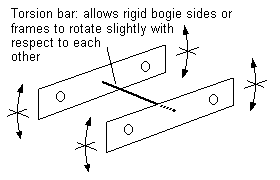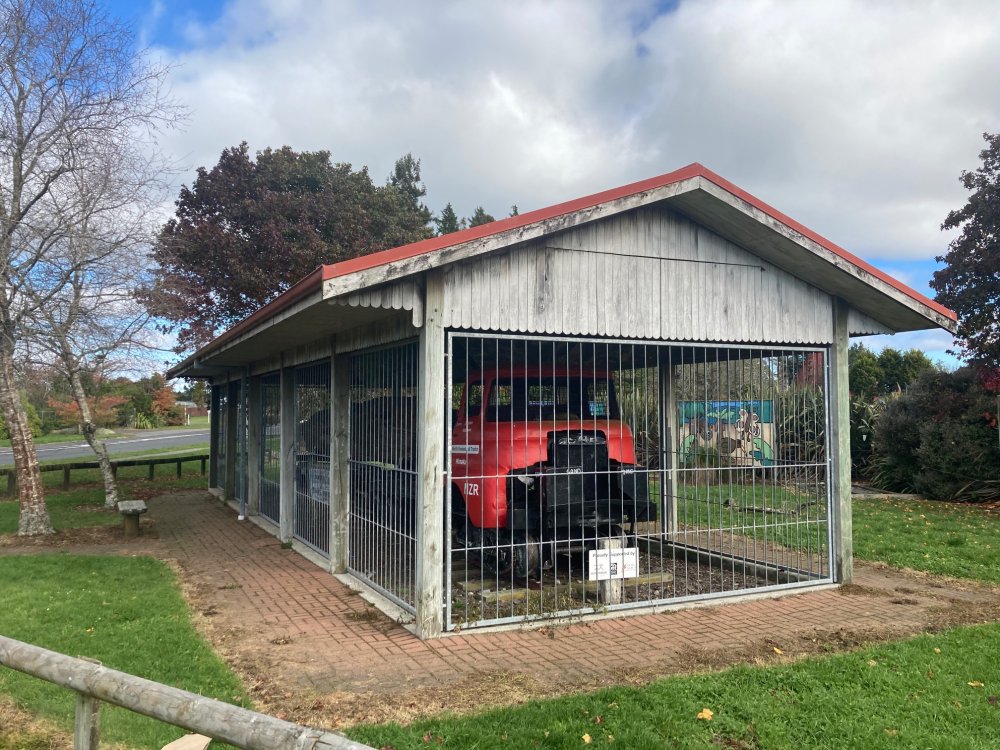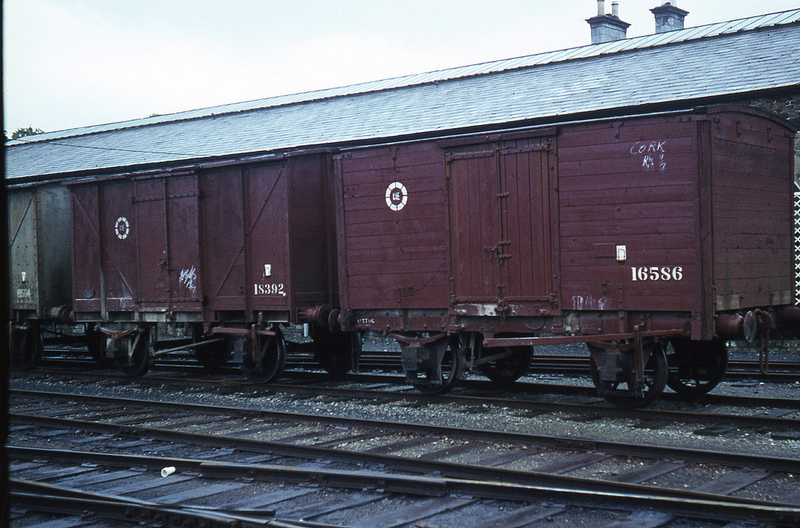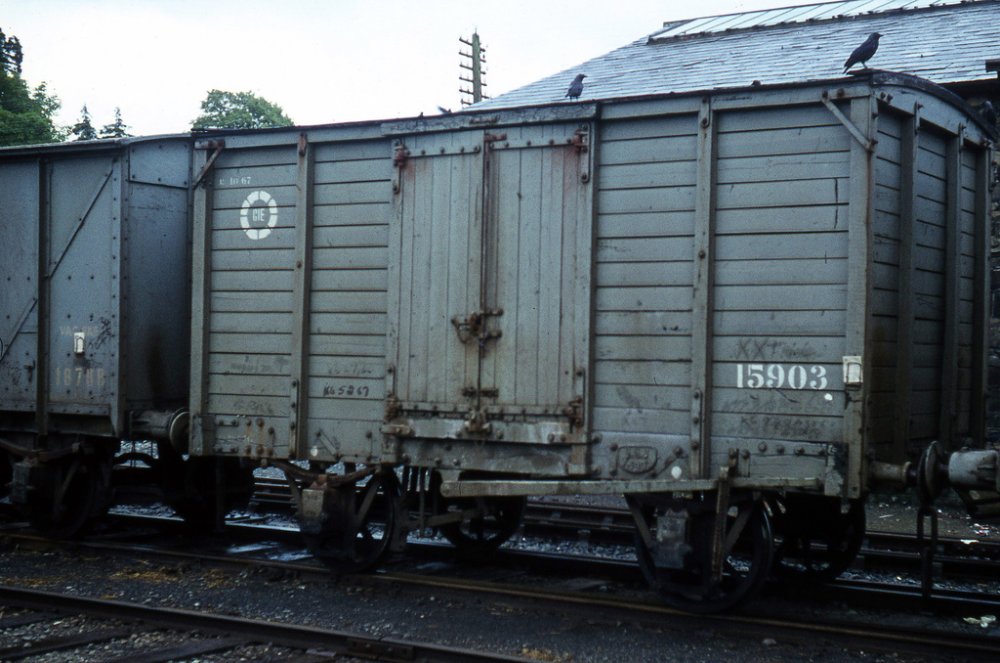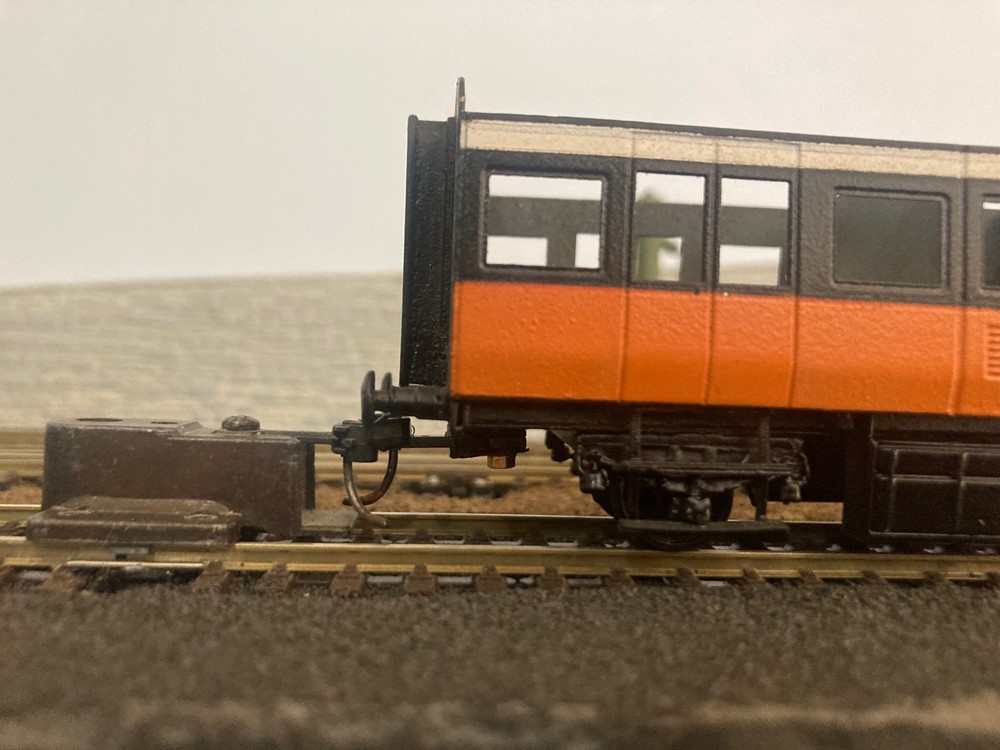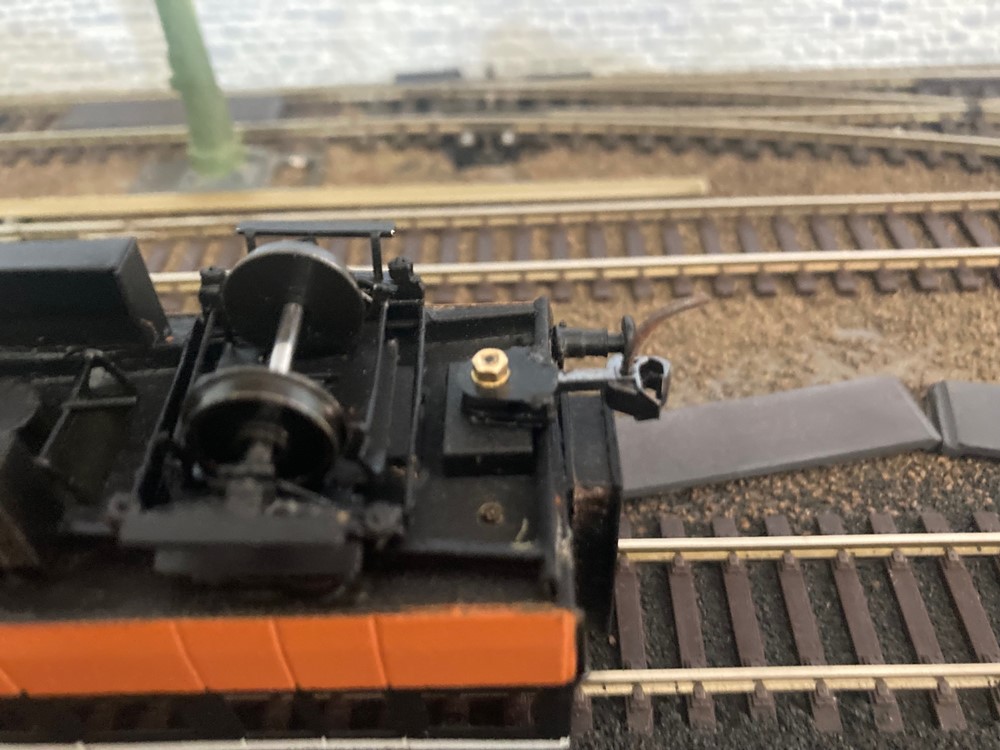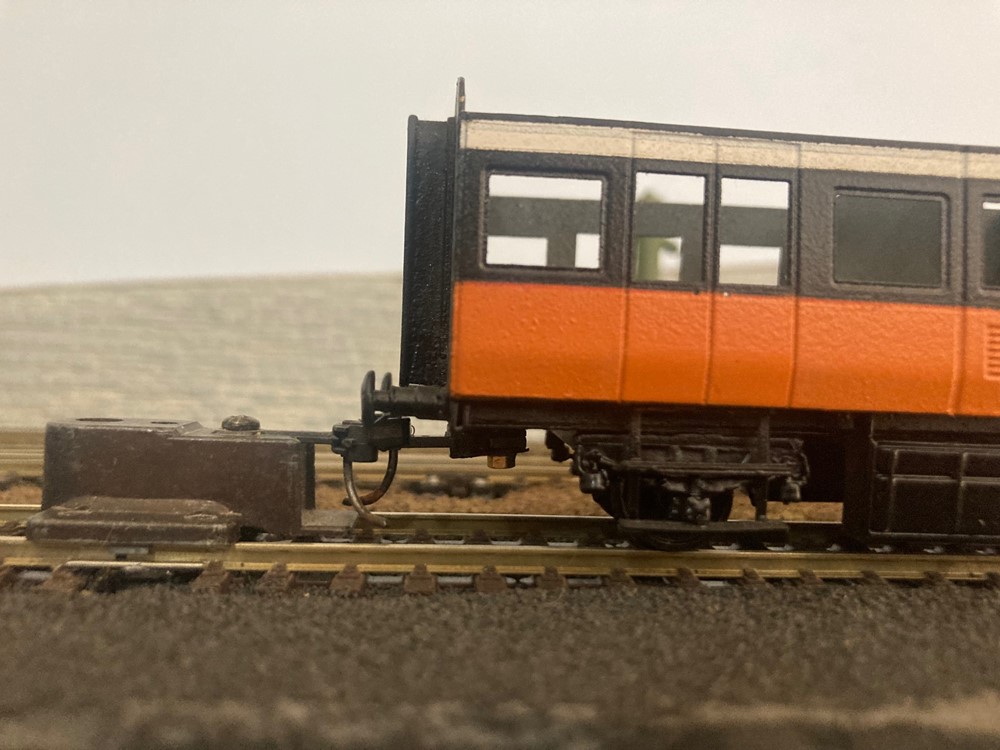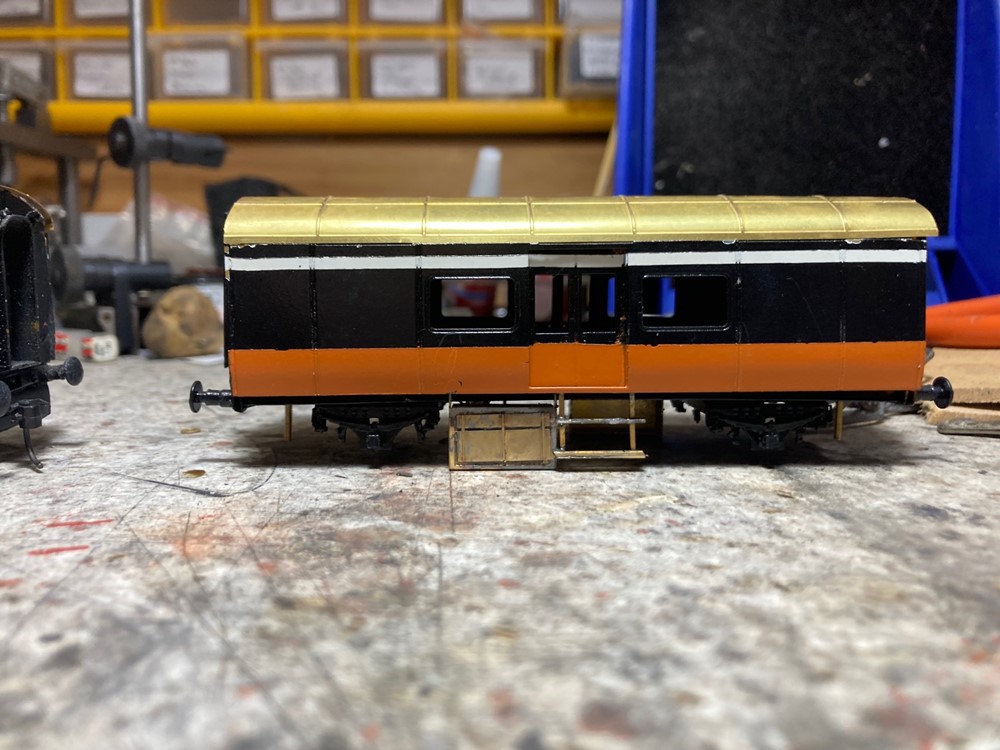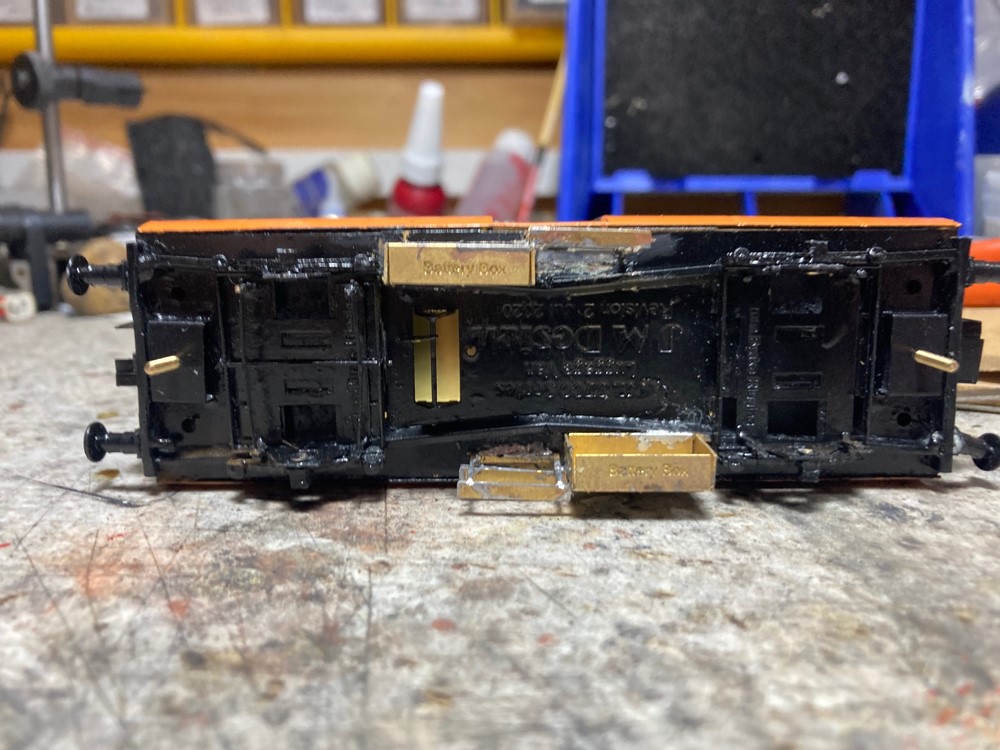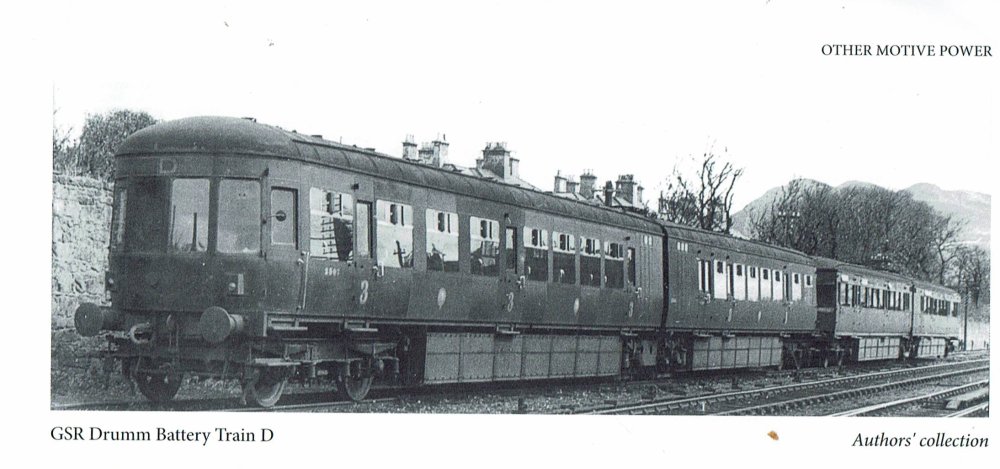-
Posts
4,853 -
Joined
-
Last visited
-
Days Won
119
Content Type
Profiles
Forums
Events
Gallery
Blogs
Store
Community Map
Everything posted by Mayner
-
The AEC railcars were basically the 1950-60 equivalent of the Rotem Intercity sets working both prestigious trains like the "Enterprise" and Cu-na-Mara (Dublin-Galway-Westport) and secondary main line passenger services like Mallow-Tralee or Amiens St-Rosslare. The GNR replaced the 600 Class Cars on the Enterprise with the more powerful BUT railcar sets until replaced by 70 Class sets in the late 60s, CIE continued to work the Cu-na-Mara and Dublin-Sligo trains with AEC railcars until the late 60/early 70s. Like today the main complaint from the modelling community was that railcars were boring just running up and down, one GNR (I) modeller built a fleet of BCDR locos to work the railcar diagrams on his layout. The AEC cars were basically victims of planned obsolescence as a result of Leyland ceased supplying spare parts including engines and gearboxes for the AEC cars. I don't think the spartan (sometimes fuel filled) interiors of the AEC cars and Inchacore or Dundalk trailer coaches would compare to well with the current Rotem stock.
-
One option may be to support the leading and center axle on a beams using normal top-hat bearings similar to Fig 36 in the Scalefour digest. I am not convinced that you will need to patch the center axle cutouts & form oval axle holes, the combination of the High Level gear carriage and subframe will maintain the axles in their correct position. The beams would be supported by a pivot Another alternative may be to reverse the Hornblocks to face outwards and file/machine the excess metal from the rear of the axlebearing.
-
A completely different design of loco to the 071s apart from the cab ends! As Mogul notes they have a 1870hp 16cyl engine rather that the 12cyl in to 071 The "Retales" appear to have an 567CR non-turbo engines which explains why they appear to sound like the 121. Max speed 74.4mph less powerful than on 071 Approx 13 tons heavier with a similar traffic effort which would have made a Retales more suitable for heavy freight work & less prone to slipping than an 071 https://en.wikipedia.org/wiki/Renfe_Class_319_(later_versions) Basically EMD used standard
-
Not the brightest of ideas basically an accident waiting to happen with kids climbing on a stuffed and mounted loco in a public park. Although you cannot claim for personal injury in New Zealand railway locos and stock on display in parks and reserves are often stored under cover and securely fenced. The rail tractor was a conversion of a road truck used for hauling log trains on a Bush Logging) Tramway
-
Our 3D Print supplier has advised that they are no longer prepared to print some of our models as a result of difficulty in achieving an acceptable print quality. Going forward I am planning to use the website as a modelling Blog until I make a decision on the future of the business.
-
The 91 J & JA Class 4-8-2 built between 1939 and 56 had a lot of American design features including cast steel beds and Baker valve gear. The Js became the standard mixed traffic type while the K & Kb 4-8-4 continued to work the heaviest trains until displaced by diesels from the late 1950s onwards. The ks introduced in the early 1930s had plate frames problems with cracking Wait until you see the Kb Class
-
Iain Rice's articles inspired my modelling from an early stage. I felt privileged to meet him at a convention in Christchurch about 12 years ago and actually touch some of his early models including "Camel" a Bodmin and Wadebridge 0-4-0St of 1834
-
Being somewhat "out of the loop" in terms of excursion train operations, I had to investigated after hearing what sounded like an American stye locomotive whistle yesterday morning and late evening. To discover that steam had returned to the Main Lines for the first time in the past 3 years with some locally based 'School Holiday" excursions. The "School Holiday" excursions are operated in conjunction with a "positioning run" to move a locomotive and train from Wellington to Auckland in conjunction with the Grand North Island Steam Tour. Weather was overcast but could not resist today Hamilton-Waharoa lunch time run. New Zealand Railway coaches were traditionally painted Red, the Yellow coaches are from the Glenbrook Vintage Railway near Auckland who are hosting the train during its sty in the Auckland region
-
Fyffes became an Irish company after the takeover of Fruit Importers of Ireland. Interestingly CIE transported Fyffes? bananas imported through Cork Port by rail to Dublin at some stage during the late 60s/70s. Remember reading an article on CIEs traffic in the staff newspaper "Nuact" nothing on the actuial hardware used Possibly CIE or even Fyffes Insulated containers on contemporary 4w flats or covered vans at a stretch.
-
Its good to see a modeller scratchbuilding a chassis for al loco like D2 rather than attempting to use a rtr power bogie or chassis. The High Level motor and Quad-Driver should result in a reliable smooth running chassis.
-
As far as I recall: My experience is mainly based on travelling and watching Howth-Bray trains and the odd journey on Connolly-Drogheda services during the mid-late 70s. 1. The Dublin based Push Pull sets were based and maintained at Fairview (ex GNR Railcar Shed) until transferred to Connolly Shed during the late 70s in connection with the DART works. The Push Pull sets were turned on the triangle at Limerick Junction in order to position the loco at the North end of the train so it could be serviced inside Connolly Shed. 2. AEC Push Pull sets were exclusively worked by B201 Class up to the late 80s when 121 Class took over the working the Greystone shuttle with the remaining Push Pull set. The 201 Class were the mainstay of Dublin Suburban workings until 141/181 Class took over Outer Suburban workings around the same time as the opening of the DART 1984? 3. Push Pull sets mainly worked Howth-Bray-Greystones services, though its possible that they may have worked to Drogheda or Dundalk. Some push pull sets were withdrawn during the late 70s early 80s as CIE struggled to maintain Driving Trailers and Connector cars to keep the sets in service as the stock became increasingly decrepit. Outer suburban services are likely to have been conventional mostly early 1950s Inchacore built coaches and Laminate coaches until Park Royal and Craven coaches were cascaded onto suburban and branchline duties following the introduction of MK3 stock from 1984/5 onwards. 4. Fairview and later Connolly and Bray loco depots seem to have been the main bases for Push Pull workings. The set in the 1974 Gormonstown crash was a Connolly-Howth empty working that was diverted at Howth Junction after the train ran away (without driver) from East Wall Junction and collided with a Connolly-Drogheda AEC railcar working.
-
Argadeen appears to be in GSR post 1929 condition with "Imps" boiler, though looks very pretty in lined green. I seriously thought of getting rid of my 4mm stuff and building an O Scale T&C layout several years ago, 1-2 locos, 1-2 coaches available as kits and 10 wagons and an easier scale to work in than 4mm when your getting on a bit! .
-
The train would have run as a loose coupled unfitted (handbrake only) formation, the 20T flats are likely to have been 25436-25983 Series 20T Flats with steel floors introduced in the mid-1960s or 27101-27278 skeletal flats introduced in 1970. Fitted stock can be run with the vacuum or air brakes isolated, "modern' fitted wagons like the cement bubbles and container flats often ran in loose coupled goods trains until CIE went over to fully fitted fixed formation liner train operation during the mid-late 1970s. The second Brake Van was likely to have been worked South to Claremorris or possibly Limerick for operational convenience. The Burma Road was operated as part of the "Southern" up to closure with Limerick responsible for allocating locos and brake vans for the Limerick-Sligo and Limerick-Claremorris good trains. There is a good account of the final days operation of the Burma Road and other lines closed on the same day in the February or June 1976 IRRS Journals
-
The LNER classification system seems to have originated on the Great Northern Railway (England!) under Henry Ivatt (ex-GSWR man) as CME. GSWR introduced a similar "Inchacore Class" system in which the 213 Class 0-6-2T t received the classification "I" It looks like the "Inchacore" system was introduced following J R Bazin's (an ex-Doncaster man) appointment as GSWR CME in 1920 his powerful 500 Class 4-6-0s are designated B1 while to older inside cylinder 362 Class 4-6-0s were classified as B3. The 'Inchacore' system was modified following the 1925 amalgamation with some classes re-designated subject to reflect tractive effort 341 "Sir William Goulding" the GSRs most powerful 4-4-0 was re-classified from D3 to D1 and the 333 Class Rosslare Bogies re-classified from D1 to D2,3,4 and the two 213 Class Banking Tanks re-classified from "i" to I1. The tiny McDonnell 0-6-0T 90, 99,10 were re classified from J13 to J30. The main theoretical benefit of the GSR system is that it would have allowed motive power planners who were unfamiliar with locos from different pre-amalgamation companies to identify and allocate locos to meet traffic requirements based on wheel arrangement and hauling power. In practice the Southern, Midland, South Eastern and West Cork systems continued to operate as separate railways under common ownership, retaining pre-amalgamation motive power and operating practices to the end of steam. The main exceptions were GSWR D4 4-4-0s and MGWR G2 2-4-0s taking over passenger duties on the South Eastern as a result of Civil War casualties and the indigenous motive power wore out, occasional swapping of GSWR & MGWR 4-4-0s on Nenagh and Sligo Road passenger services and the long term loan of ex-MGWR 0-6-0s for the Waterford Area Beet campaign.
-
I saw one grey (double skinned) van apparently in service in Westport Good Yard in 1975. Was on holidays with my parents and did not get a chance to check out the station or yard. The IRCH Standard Wooden vans like the ex GNR seem to have gone by the early 70s, quite a few grounded bodies floating around on farms and factories. The remaining GSWR/GSR steel framed planked version of the H Van seem to have ended up in Departmental service by the mid 70s at least one a long term resident at the Sheriff Street crossing end of the Dardanelle Sidings, the vans in Departmental service had a small window in the end.
-
it looks like the commemorative plaque from the water tower at Castlegregory Junction that was installed following road widening during the 1970s
-
The timber frames GSR Vans appear to be a double-skinned or insulated version of the standard IRCH Covered Wagon intended for "perishable" traffic such as bacon or butter traffic. 16586 is basically a doubled skinned version of 15903 also a GSR built van A possible traffic from the Glenmore Co-Op? These vans appear to have been in traffic up to the Mid 70s until replaced by Insulated containers or the traffic was lost to rail
-

Ernies Massive Irish 1930's to 2005 Photo Archive
Mayner replied to Glenderg's topic in Photos & Videos of the Prototype
An interesting feature is the way 130s frames have been patched/reinforced around the driving hornblock. According to Locomotives of the GSR 130 was built in 1902 and received a Superheated boiler in 1947 but retained her original frames unlike some superheated J15s including 186 that were re-built with new heavier frames between the 1920s and early 40s. The reinforced hornblock arrangement is not unlike the arrangement on the SSM J15 kit where the dummy frames (modelled as part of the superstructure) between the front buffer beam sit outside and slightly overlap the (functional) loco main frames. This allows the kit chassis to be assembled to OO or 21mm gauge, while retaining the cosmetic dummy frames in the correct position with the cylinder covers visible in the space between the bufferbeam and smokebox front a distinctive feature of the Class. According the Irish Metro-vick Diesels B234 was re-built with a Maybach engine in Dec 1965 which is likely to date the photo in 66/67. There is a 1969 photo of B233 (rebuilt in May 66) in Black with a yellow warning panel a double heading the 10:00 with B192 Sunday Connolly-Limerick, its possible B233 with its commonwealth bogies was steadier/more comfortable at speed than the Baby GMs. -
Some activity in the Carriage Shops completing some unfinished projects Tin Vans started between 2012 and 2020. Fitting Kadee No36 couplers to a Heating and Luggage Van, the best way to achieve close coupling with the JMD 4W vans. The van is the original test build with 3D printed gangways assembled in 2012. The vans were designed with a coupling mount for a No 36 coupler, no messing about with NEM pockets! The coupling mount, Kadee draft gear box and securing nut and washer is completely concealed within the fuel tanks on these vans The orange peel paint effect is less obvious at normal viewing distance! Retro-fitting the battery boxes and footsteps to the test build of the MK2 version of the Luggage Van. I made an error in the battery box CAD work for the MK2 version, the main reason for a test build before producing the production version. I am not sure whether its a better option to try and make good or strip the existing paintwork and start again!
-

"Sentul" - a live steam locomotive in Malahide Castle
Mayner replied to jhb171achill's topic in Irish Models
Best option may be to post your question on the origin of the model on Model Engineer Forum https://www.model-engineer.co.uk/forums/, Bassett Lowke is currently Hornby Hobbies brand name for its steampunk range, the original Northampton based company was dissolved during the 1960s, Corgi used the brand name for the Chinese 'replica" BL O Gauge mogul released in the early 2000s -

Port of Cork opens €89m cargo terminal at Ringaskiddy
Mayner replied to K801's topic in What's happening on the network?
Internationally rail freight terminal facilities (& sometimes rolling stock) are usually provided and funded by the shipper (customer) rather than the railway operator or funded by Government. Locally Hamilton (similar population to Cork) has two operational and two planned (one under construction) railfreight terminals. One terminal opened in 2005 basically operates as a warehousing facility and distribution hub for the Upper North Island dairy industry together with handling general freight traffic handles in excess of 800,000 tonnes of freight annually https://www.waikatoregion.govt.nz/assets/PageFiles/19549/EWDOCS_n2044488_v1_Fuel_Efficiency_Impacts_of_Fonterra_s_Crawford_St_Dairy_Freight_Hub.pdf. The second operational terminal serves a Mainfreight distribution depot with siding capacity for 16 bogie wagons. The third terminal under construction will serve a new Inland Port the Ruakura Superhub a development by Tainui Group Holdings the commercial arm of the Waikato Tainui Iwi (Nation) https://www.ruakura.co.nz/ The fourth terminal proposed terminal with siding agreement to serve the Northgate Business Park The Open Country Dairy plant and Port of Auckland Hub. https://www.northgatepark.co.nz/location/ Its difficult to see similar developments occurring in Ireland mainly as a result of the nature of Ireland's industrial development and shorter distance between industrial centers and the ports. Its difficult to imagine Kerry Group or Glanbia establishing a rail based distributions system to export cheese or milk power by the trainload from its processing plants to Dublin, Cork or Waterford Ports, despite Brexit its likely to be more cost effective to serve UK customers by road and Ro Ro ferries than by rail. -
Transit times to Ireland and An Post customs clearance appear to have improved significantly since this thread 1st opened. We recently shipped an item (from New Zealand) to a customer in Ireland in exactly 7 days including Customs clearance. While some of the larger UK retailers such as Hatton's export items to the EU Vat paid, its not a viable option unless a business has a high volume/value of export trade to the EU. Some of the smaller specialist UK suppliers are not registered for UK Vat because of low business turnover. As a small retailer I looked at the option of offering a DTP (delivery and tax paid) >$150 & IOSS (import one stop ship) <€150.00 service to customers in the EU and UK, but it actually worked out cheaper for the customer to pay the An Post (or Royal Mail) fee and Vat upon arrival than up front in the purchase price, as a result of higher admin costs.
-
Train C Fry Model Locomotives of the GSR Clements and Mc Mahon. Train D Locomotives of the GSR Clements and Murray. Rounded cab ends appear to be a common styling feature on pre-War 'Streamlined" railcars in both Europe and America including the LMS Articulated Diesel Train https://commons.wikimedia.org/wiki/File:LMS_Diesel_Multiple_Unit_80000–80002.jpg, the Flying Hamberburger and American Car and Foundry "Motor-Railers.http://www.northeast.railfan.net/images/nysw1006.jpg I wonder whether the original streamlined design of Train C and D was intended for a prestigious Tourist Train?, CIEs included a luxury diesel railcar "Tourist Train" as a priority in their original dieselisation proposal (1946). Train A or B successfully completed a VIP special from Amiens's St to Gorey and retrun in the early 30s, so its possible the concept could have been extended to longer distance such as Kingsbridge-Killarney with charging and top up points en-route.
-

Brookhall Mill - A GNR(I) Micro Layout
Mayner replied to Patrick Davey's topic in Irish Model Layouts
Inter-Company rivalry was a serious matter and loyalty to the old companies survived amalgamations and nationalisation. There is a great story in one of the 1970s/80s RPSI Journals about the "Great Race" between GSWR & DWWR Waterford-North Wall cattle specials shortly after the opening of the DWWR Waterford Extension in the early 1900s. The two trains were made and apparently departed Waterford Yard (simultaneously) in different directions, the GSWR special hauled by 101 Class (Standard Goods) 184 , the DWWR train hauled one of the companies recently introduced "Standard Goods" possibly No 13 (Waterford) or 14 (Limerick). The GSWR special arrived at the North Wall before the DWWR special (not really surprising given the longer more heavily graded DWWR route and two reversals to reach its destination). The GSWR & DWWR drivers did not depart on exactly good terms threatening violence if they ever met again. Twenty or so years following the GSR amalgamation with Waterford and Grand Canal Street sheds in the same promotional area the former GSWR Waterford driver and DSER rival met and put their differences aside as a result of an invitation from a son or daughter to meet the parents. -
It might selling as a whole particularly if it operates reliably, the basic scenery and trackwork looks good The styling and track plan looks like a classical compact American "Wild West" layout scheme like John Allen's original Gorre & Daphetid https://www.trains.com/wp-content/uploads/2020/10/first_g-d_line.pdf Would look great with American Western style buildings and trains, Rio Grande and Santa Fe are spot on for the scenery
.png.c363cdf5c3fb7955cd92a55eb6dbbae0.png)


